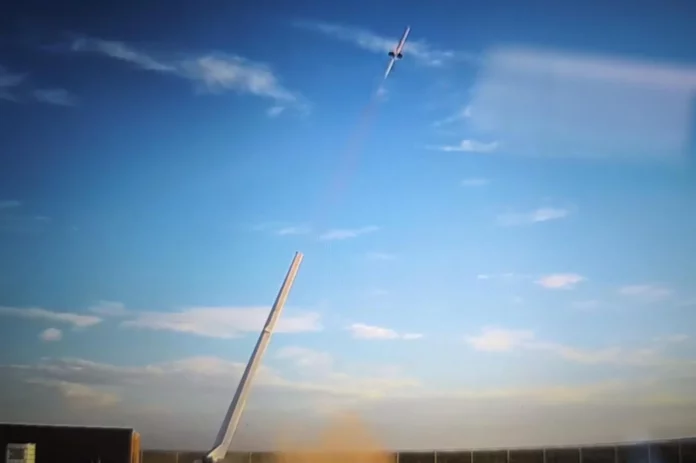The United States is one step closer to achieving hypersonic flight after Houston-based Venus Aerospace successfully tested its rotary detonation rocket engine (RDRE) on Wednesday, May 14.
The company claims that this is the first American test of this technology, which is finally becoming a reality after decades of research and development. Eventually, RDREs could become a power source for high-speed aircraft capable of traveling at six times the speed of sound, Venus Aerospace said in a statement.
“It took us about four years and a portion of our $84 million in venture funding to take RDRE from academic theory to a flight-proven engine,” Sarah “Sassy” Duggleby, co-founder and CEO of Venus Aerospace, told Gizmodo in an email.
“What makes RDRE great is not only that it works, but that it is orders of magnitude more affordable than traditional propulsion systems,” she added.
The company launched a small rocket powered by this engine with a thrust of 2,000 pounds (approximately 907 kilograms) from Spaceport America in New Mexico. According to Aerospace America, the duffel bag-sized engine lifted the small rocket to an altitude of 4,400 feet (1,341 meters) and operated for seven seconds, accelerating the rocket to a speed of about 383 miles (616 kilometers) per hour – almost half the speed of sound.
The plane flew for about 30 seconds, then parachuted softly and was picked up by rescue teams, according to Aerospace America.
Theoretically designed since the 1980s, RDREs are supposed to be highly efficient and compact. This allows them to produce more thrust with the same amount of fuel as a traditional internal combustion engine, which combines high-pressure fuel with an oxidizer in a combustion chamber and burns them to produce a steady stream of exhaust gases that propels the aircraft forward.
Instead of exhaust gases, RDRE vehicles are propelled by shock waves. These engines use a continuous injection of fuel and an oxidizer to create a wave of continuous explosions – or detonations – that travel through an annular channel. The result is a shock wave that shoots out the back of the aircraft at supersonic speeds.
This technology has the potential to significantly reduce flight time, improve fuel efficiency and reduce costs in a variety of sectors, including military, commercial and space systems,” Venus Aerospace says.
“Compared to traditional jet or rocket engines, our RDRE is 10 times cheaper to manufacture and operate,” Duggleby said. “That’s because it has no moving parts, runs on fuel that can be stored, and can be 3D printed in about a week. We expect the cost curve to continue to improve as we scale up production and licensing,” she added.
Once RDREs become commercially available, governments and companies will be able to produce hypersonic weapons at a fraction of the cost of current versions, Andrew Duggleby, CTO and co-founder of Venus Aerospace, told Aerospace America magazine. Moreover, according to him, these engines can launch space cargo four times larger than current technologies.
Achieving sustainable hypersonic flight has been the company’s goal since it was founded by Sassy and her husband Andrew in 2020. They foresee a bright future for the global hypersonics market, predicting that it will exceed $12 billion by 2030 thanks to multi-sectoral demand.
But they still have a long way to go before their RDRE can deliver sustainable hypersonic flight. Following last week’s successful test flight, Venus Aerospace plans to conduct a thorough post-flight analysis to evaluate the engine’s performance and incorporate it into future iterations, said Sassy Duggleby.
She added that the company aims to have RDRE operating systems by the early 2030s. In the meantime, it will focus on scaling the technology, honing in on its best applications, and engaging with potential investors, including the U.S. defense and national security agencies, as well as commercial customers.
So, the future has not yet arrived. But last week’s test flight marks an important step toward bringing this powerful propulsion system out of the realm of science fiction and into reality.









